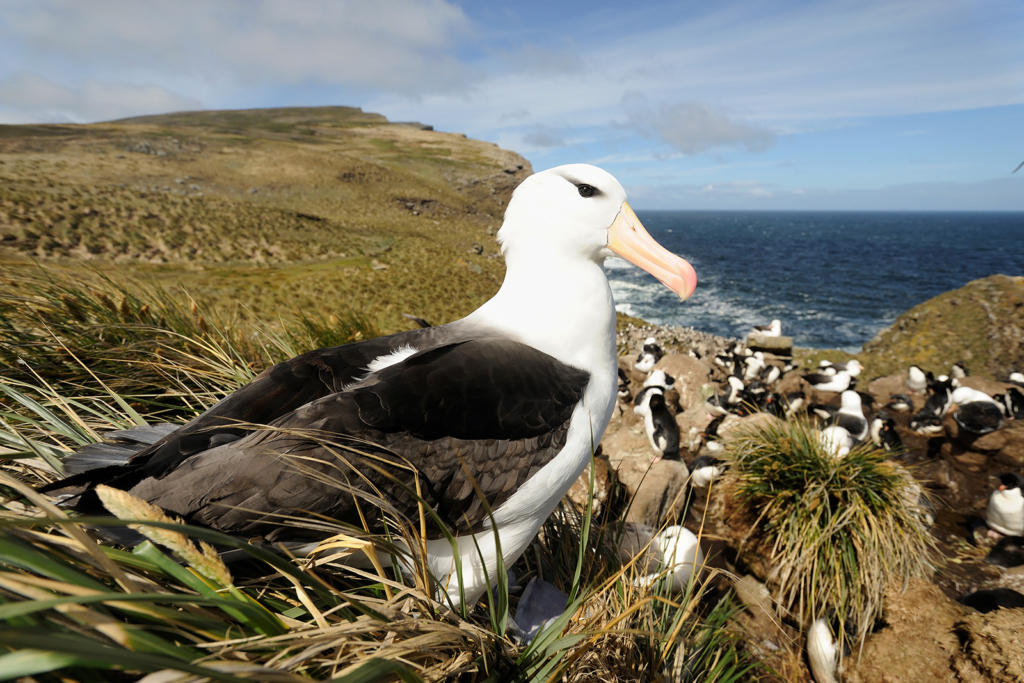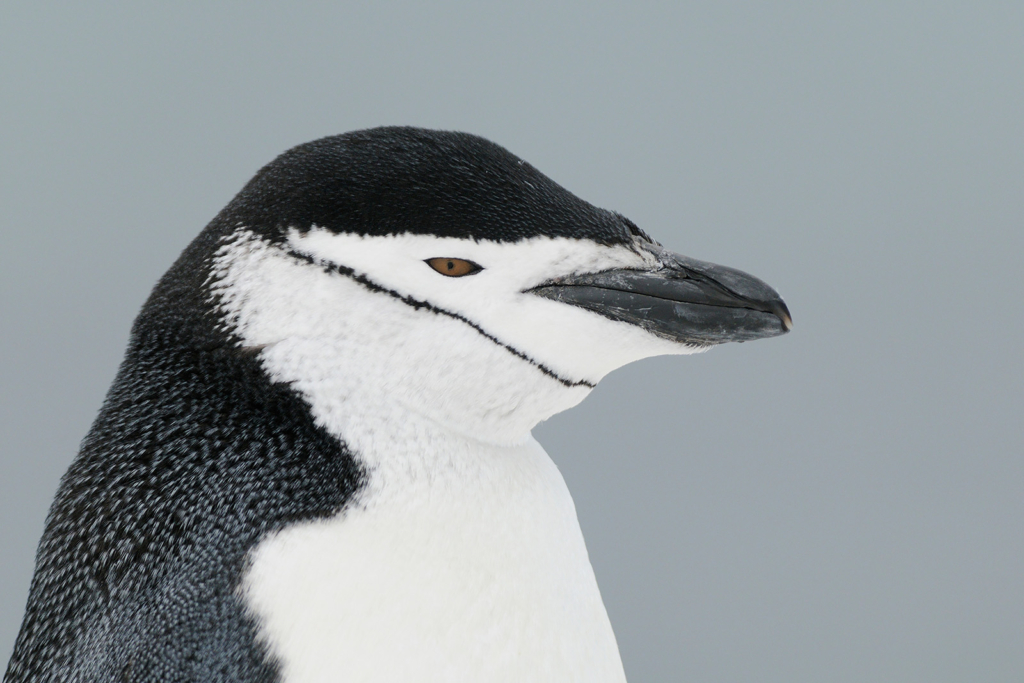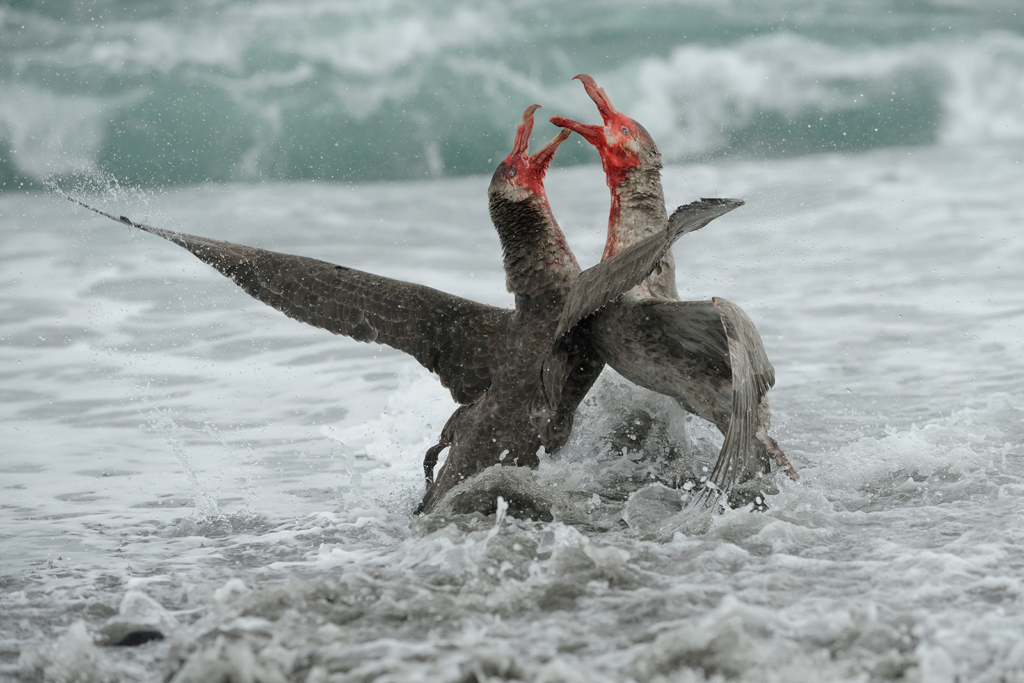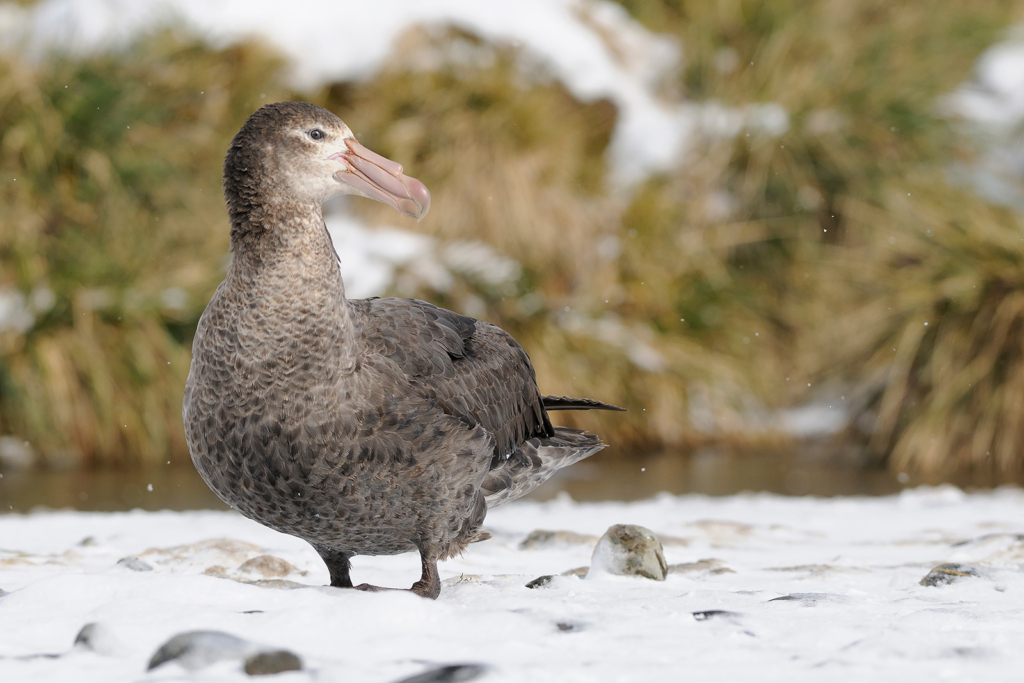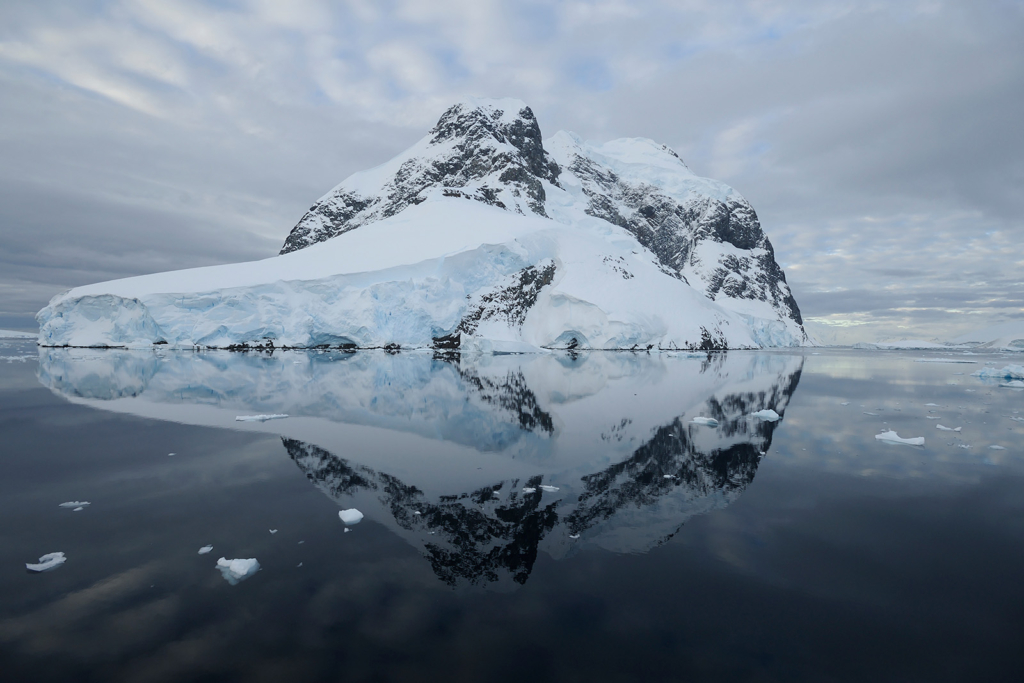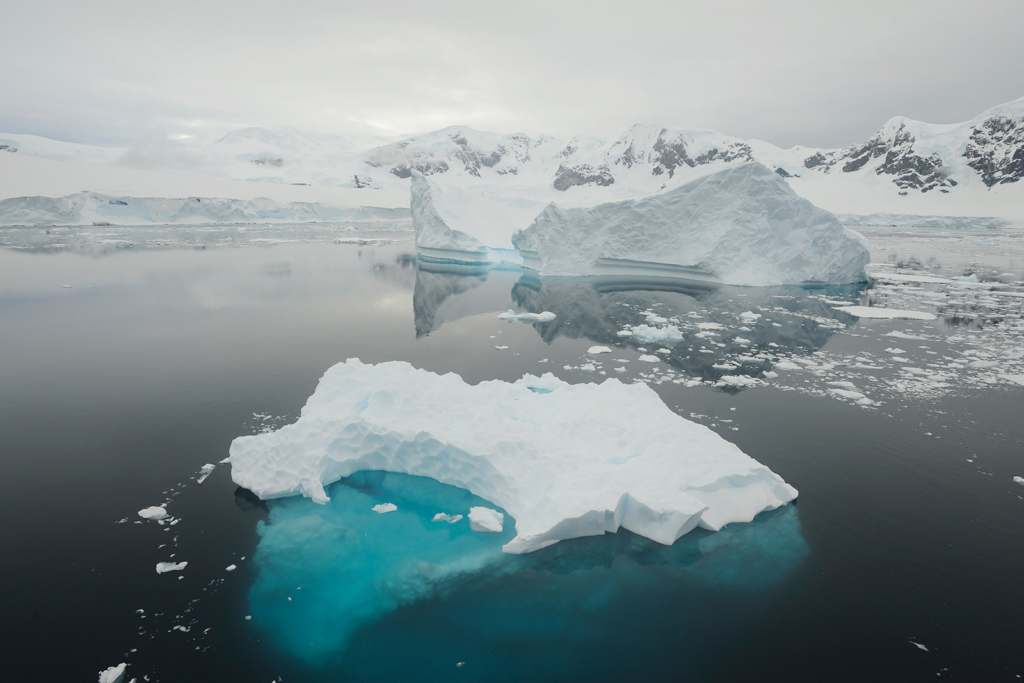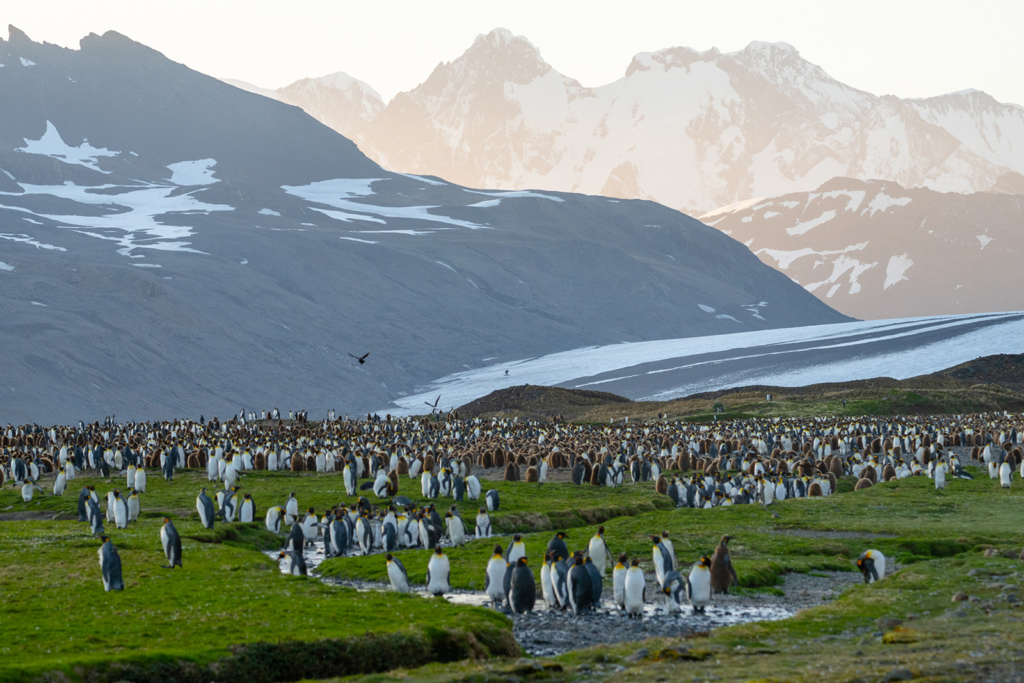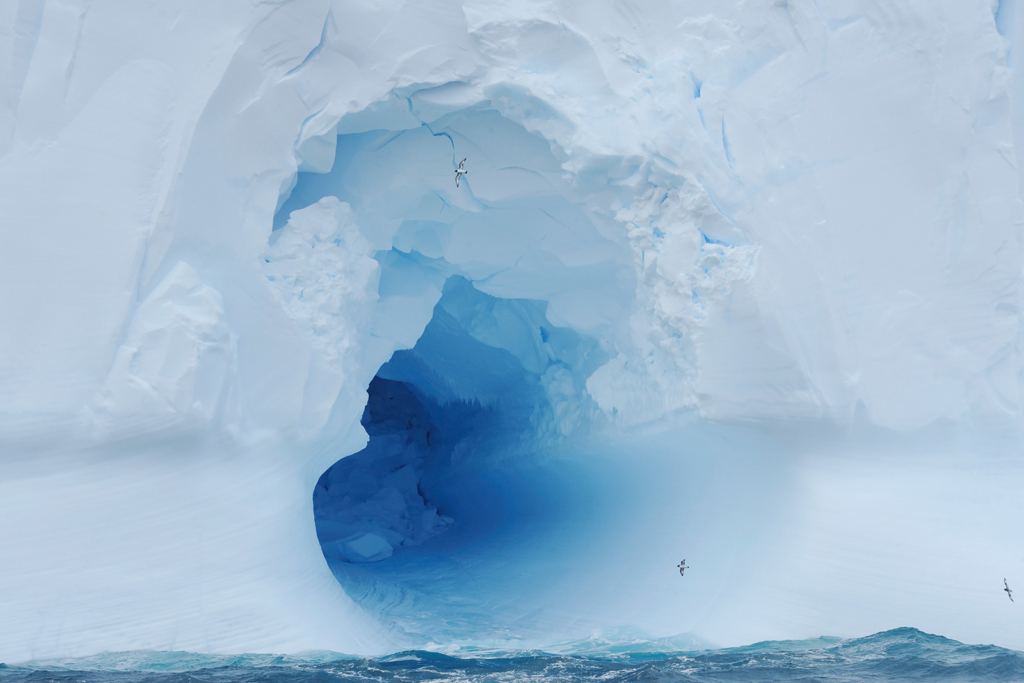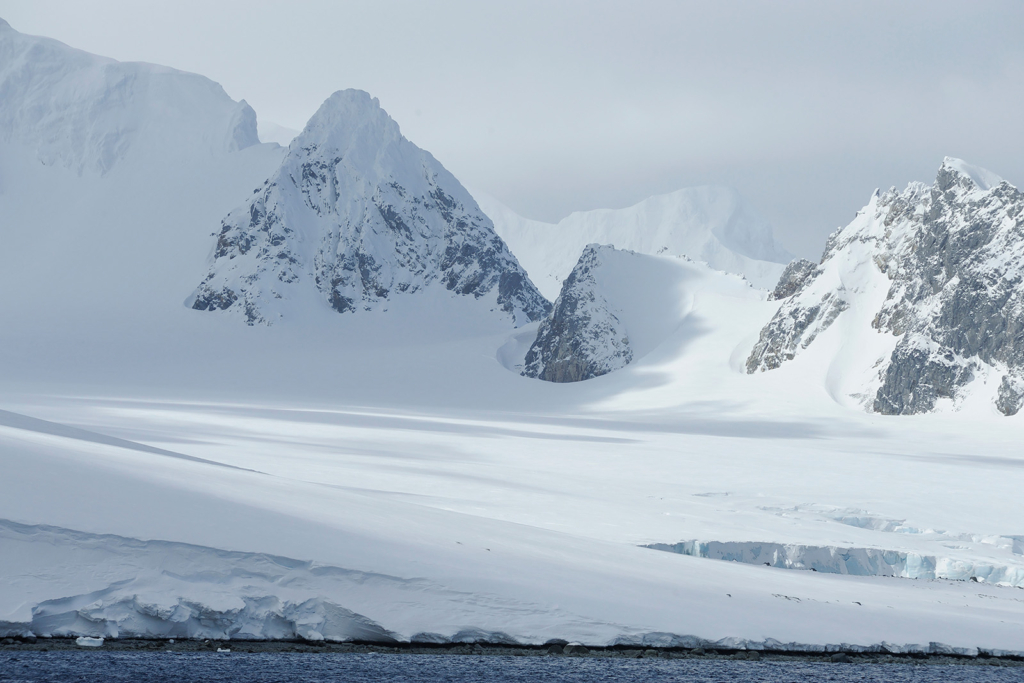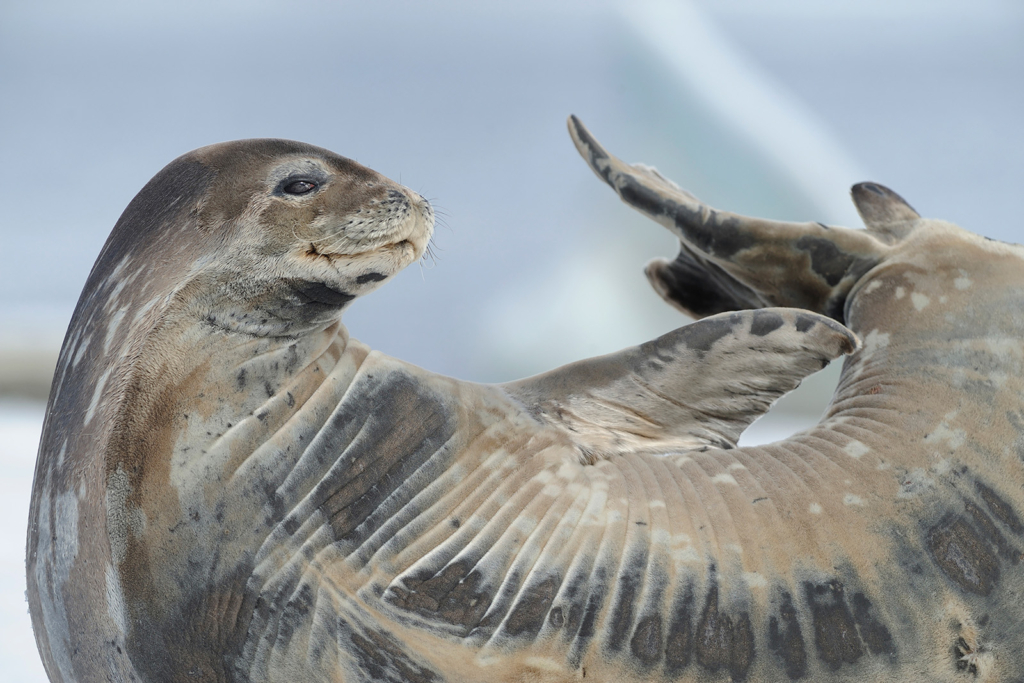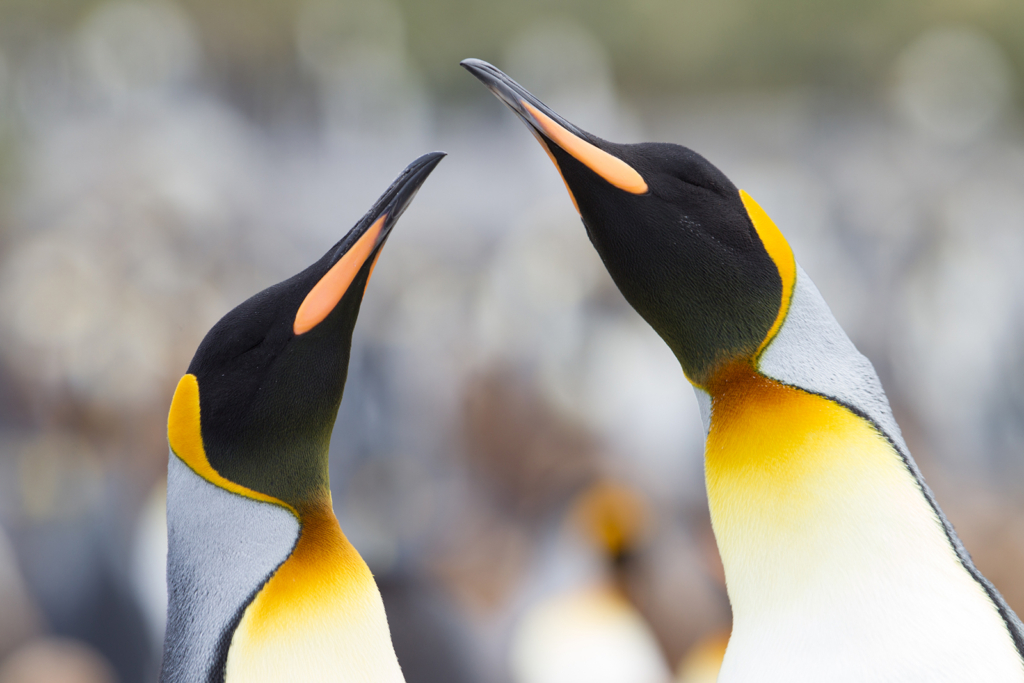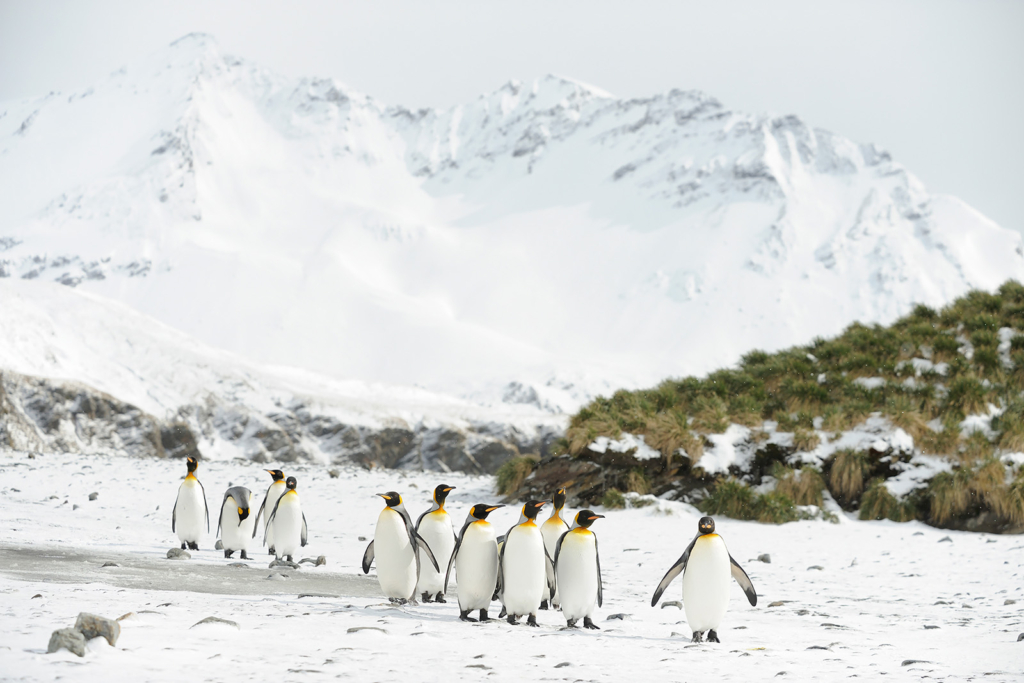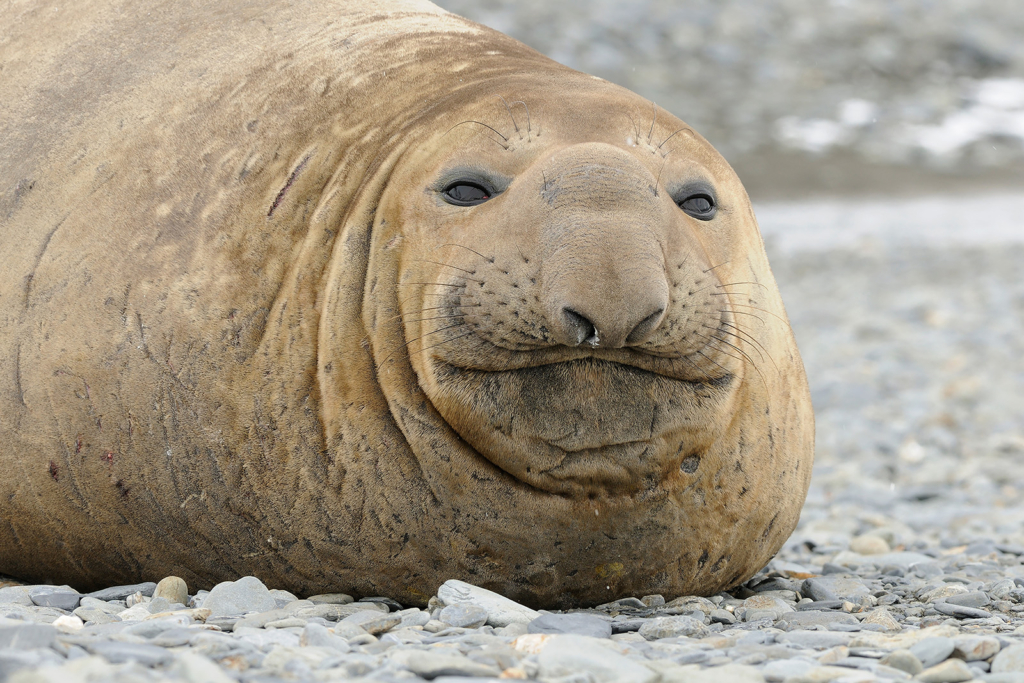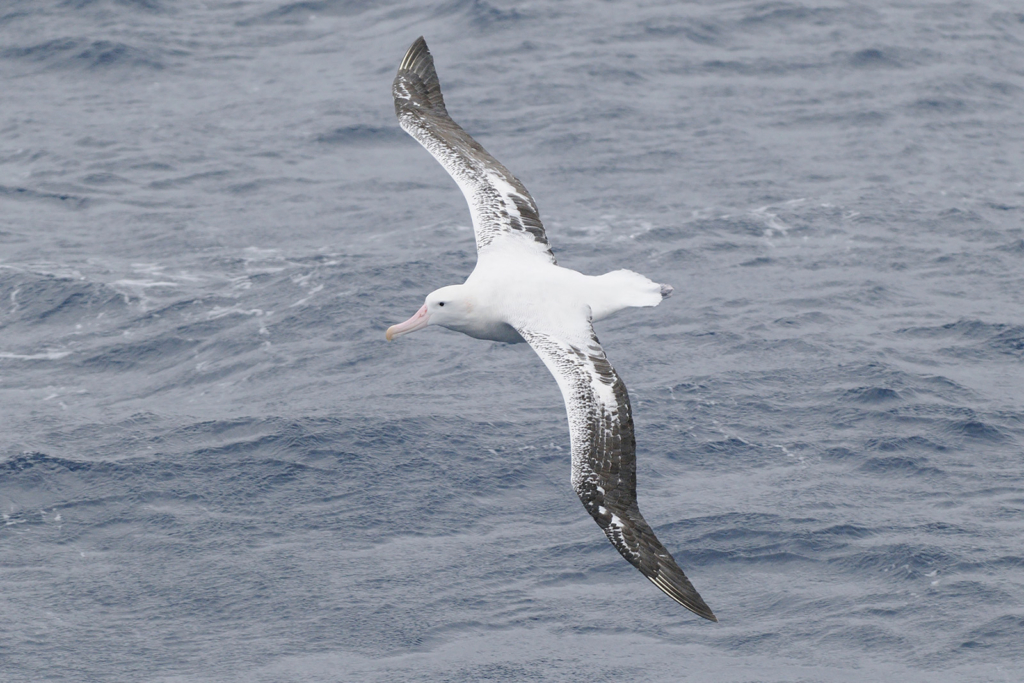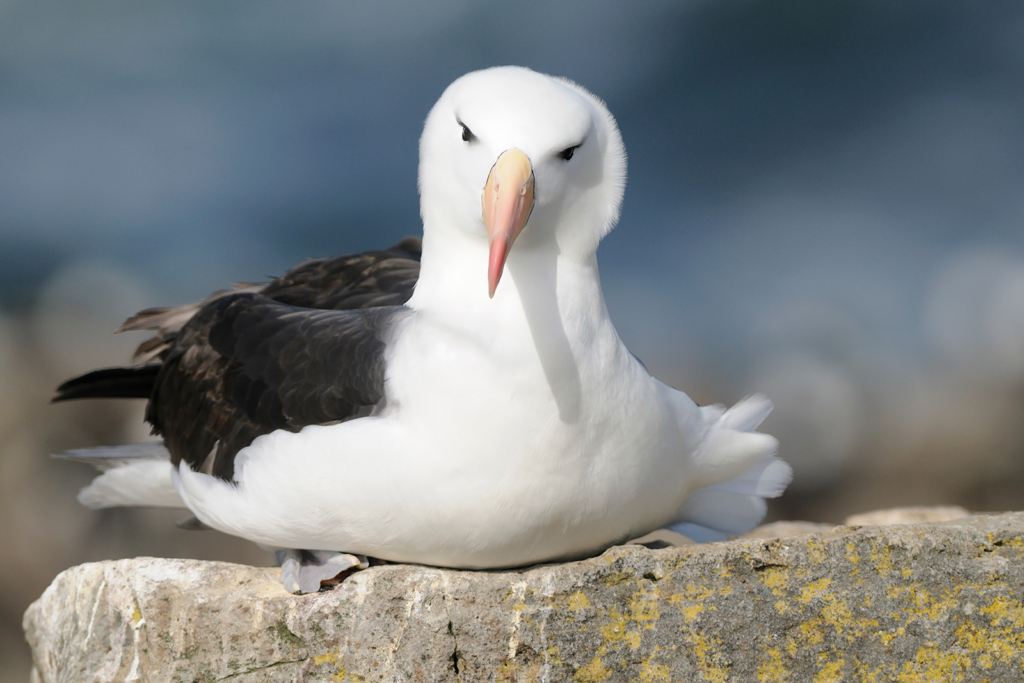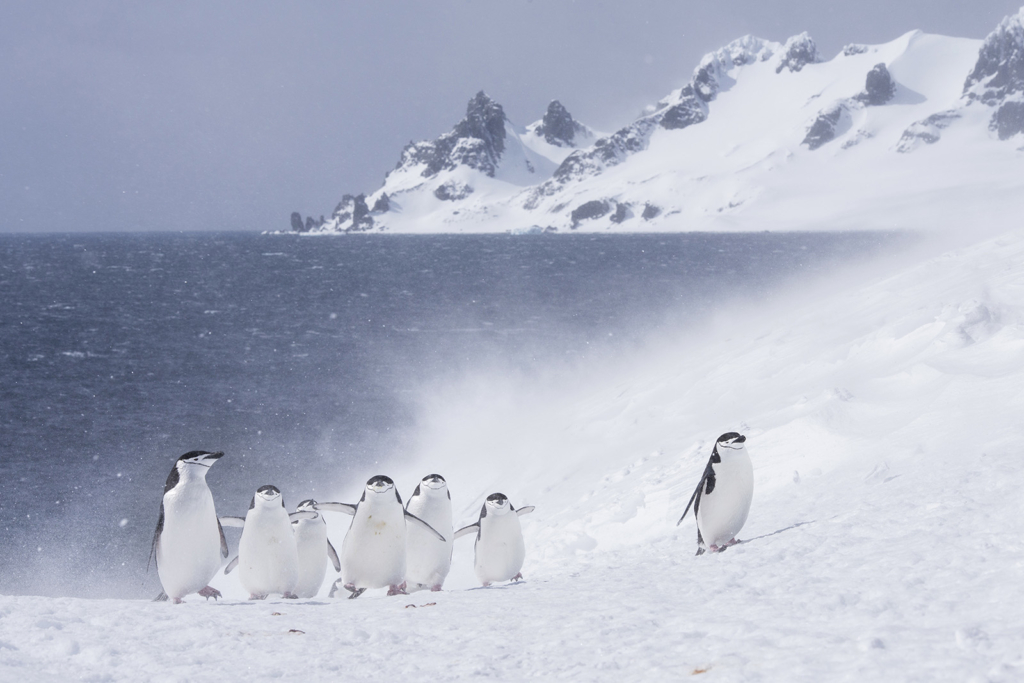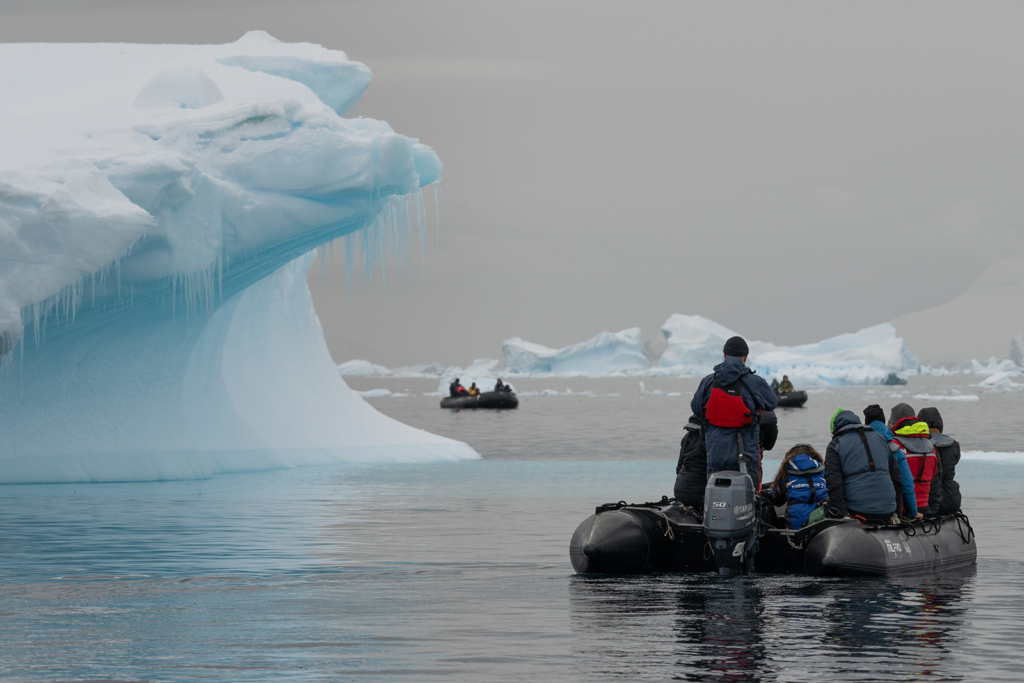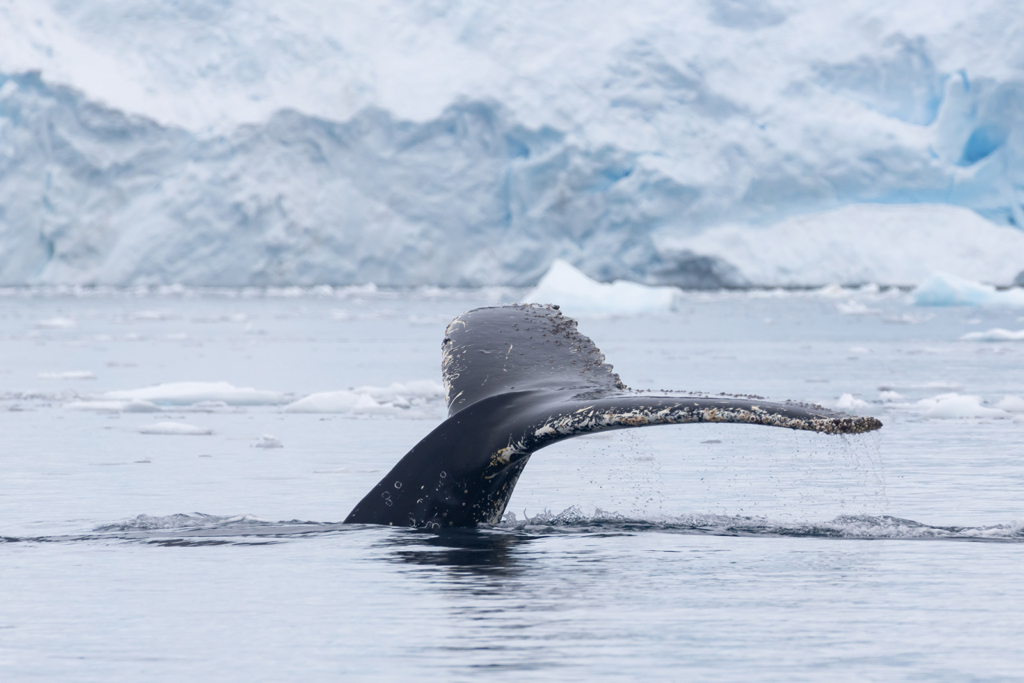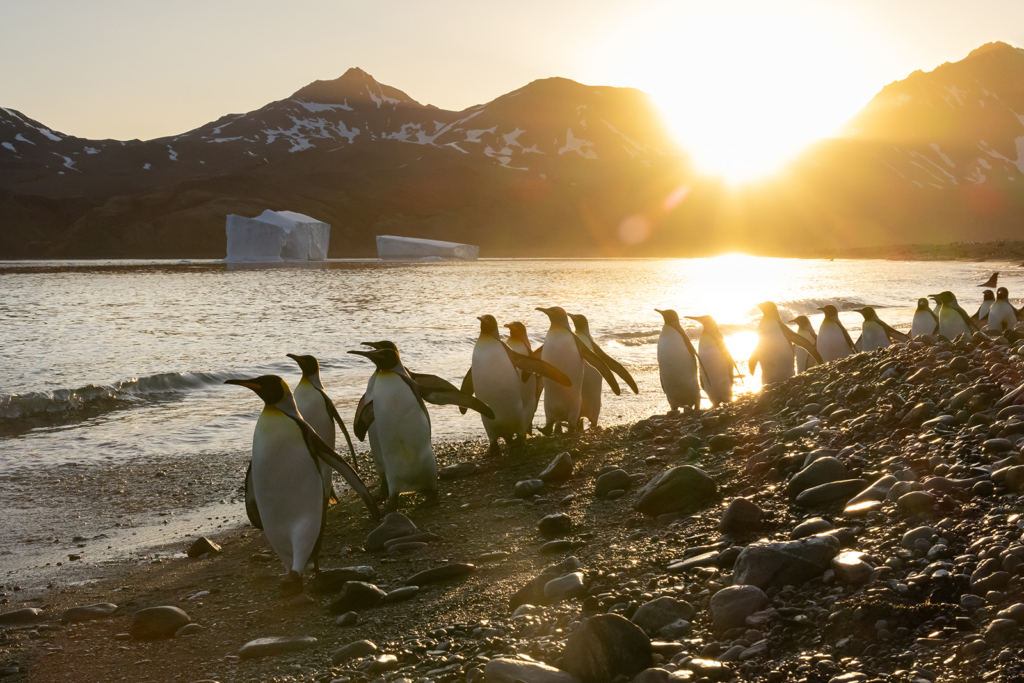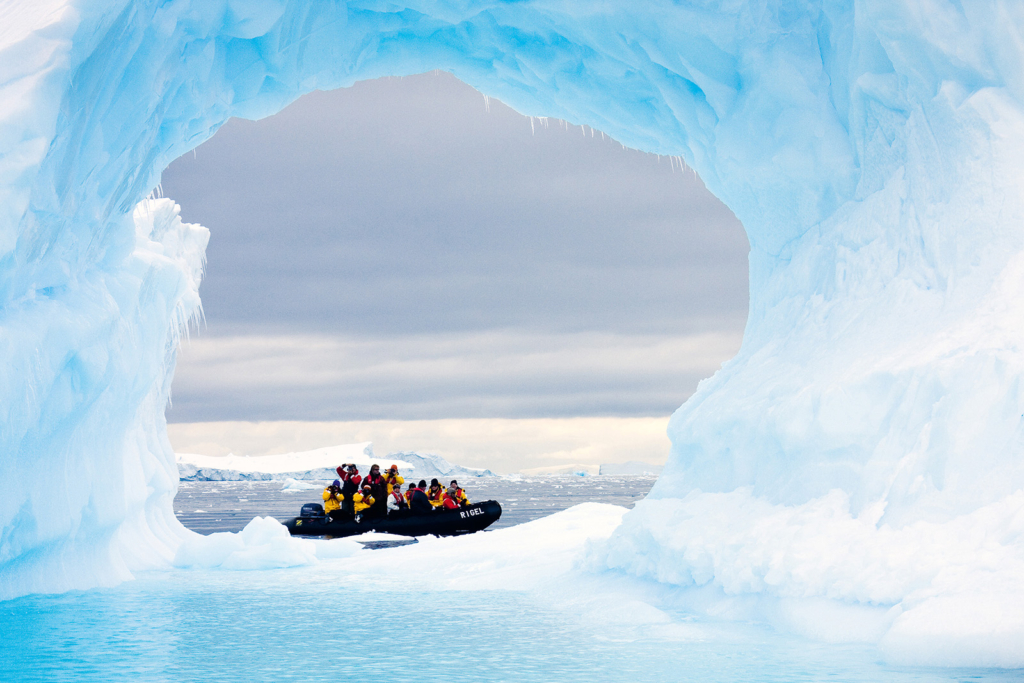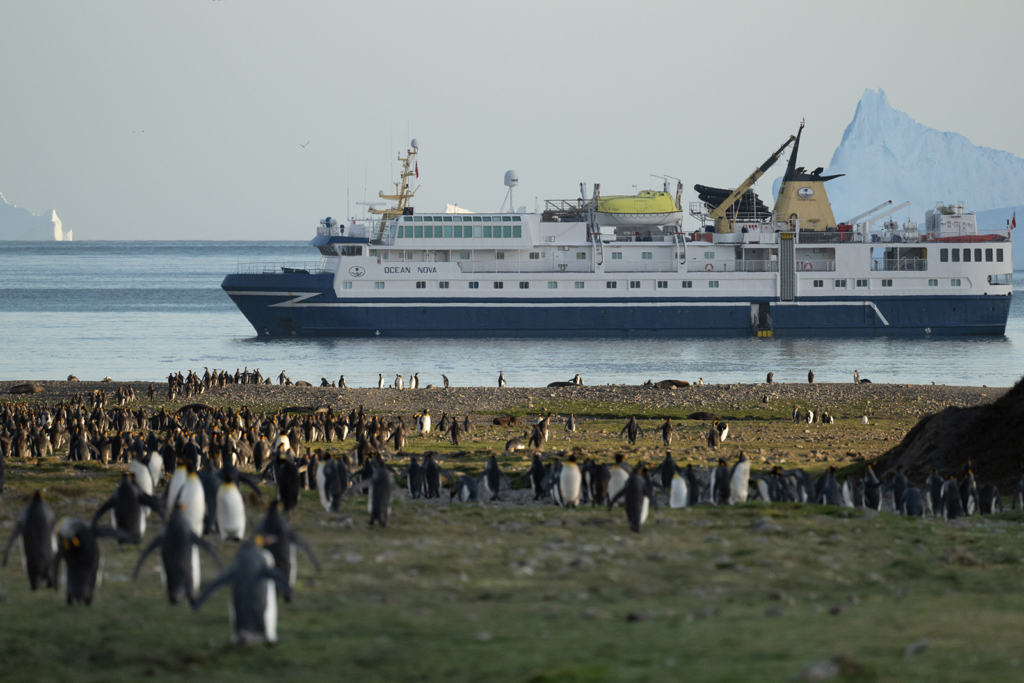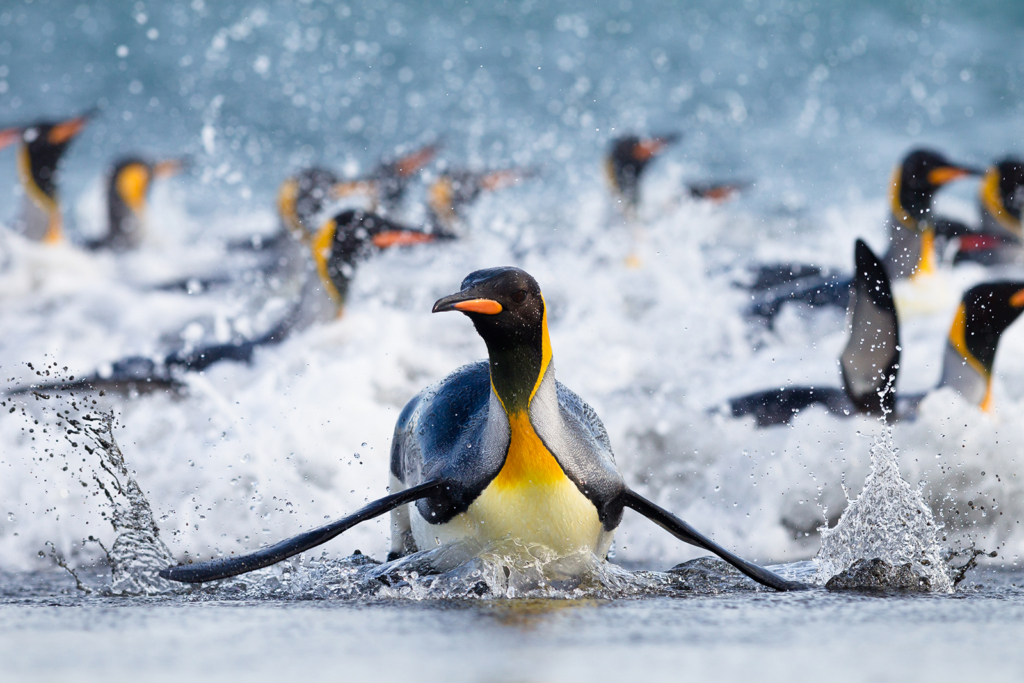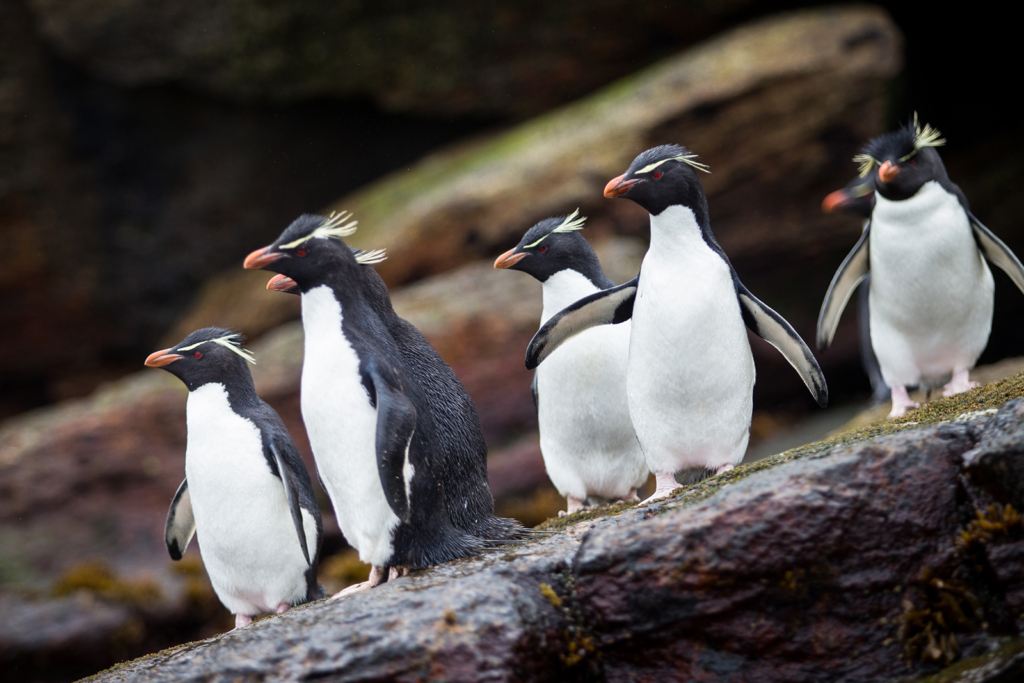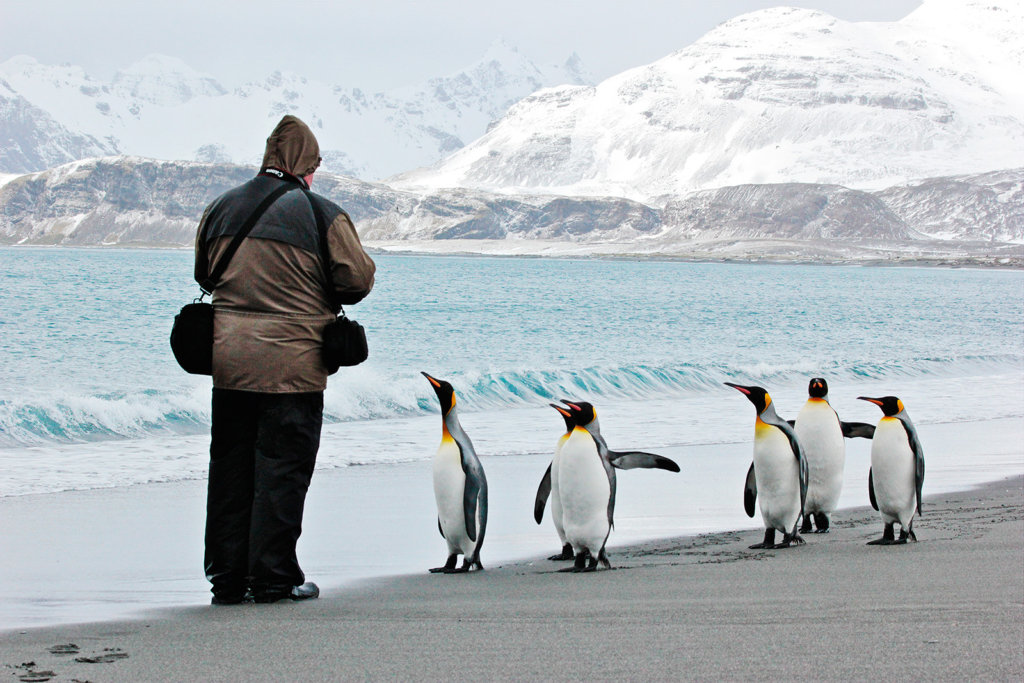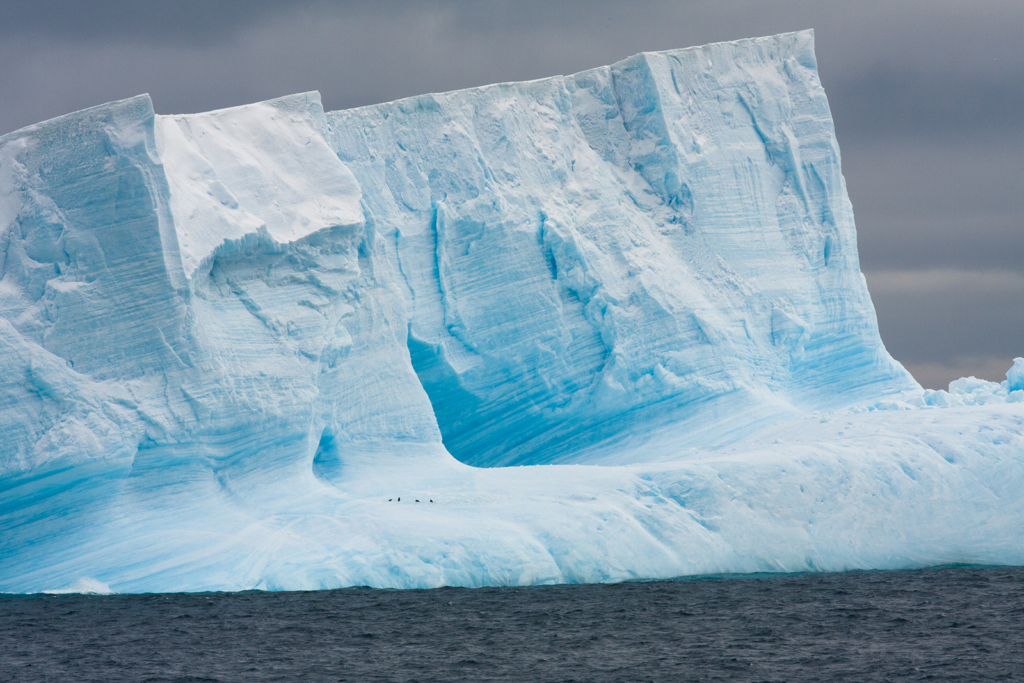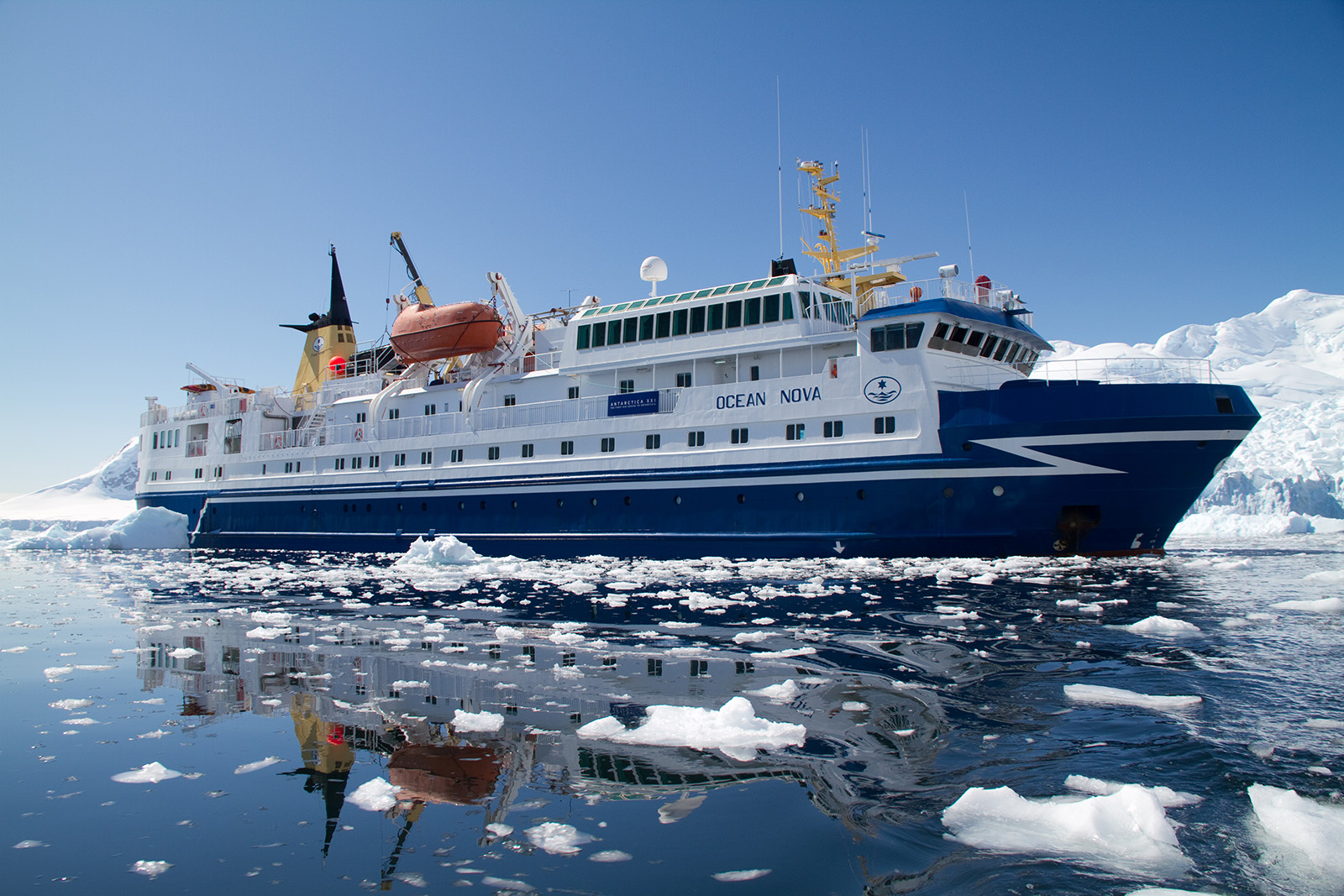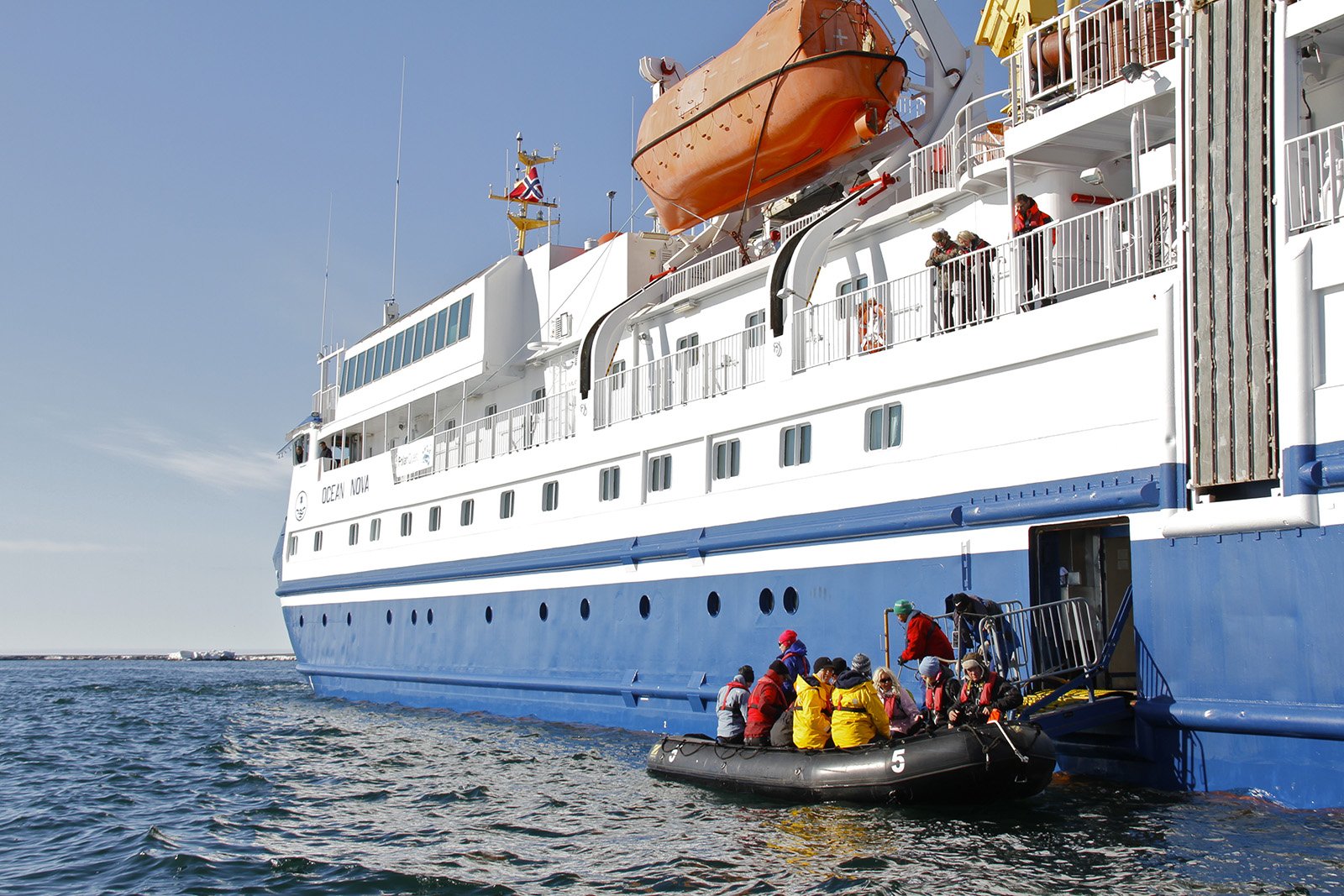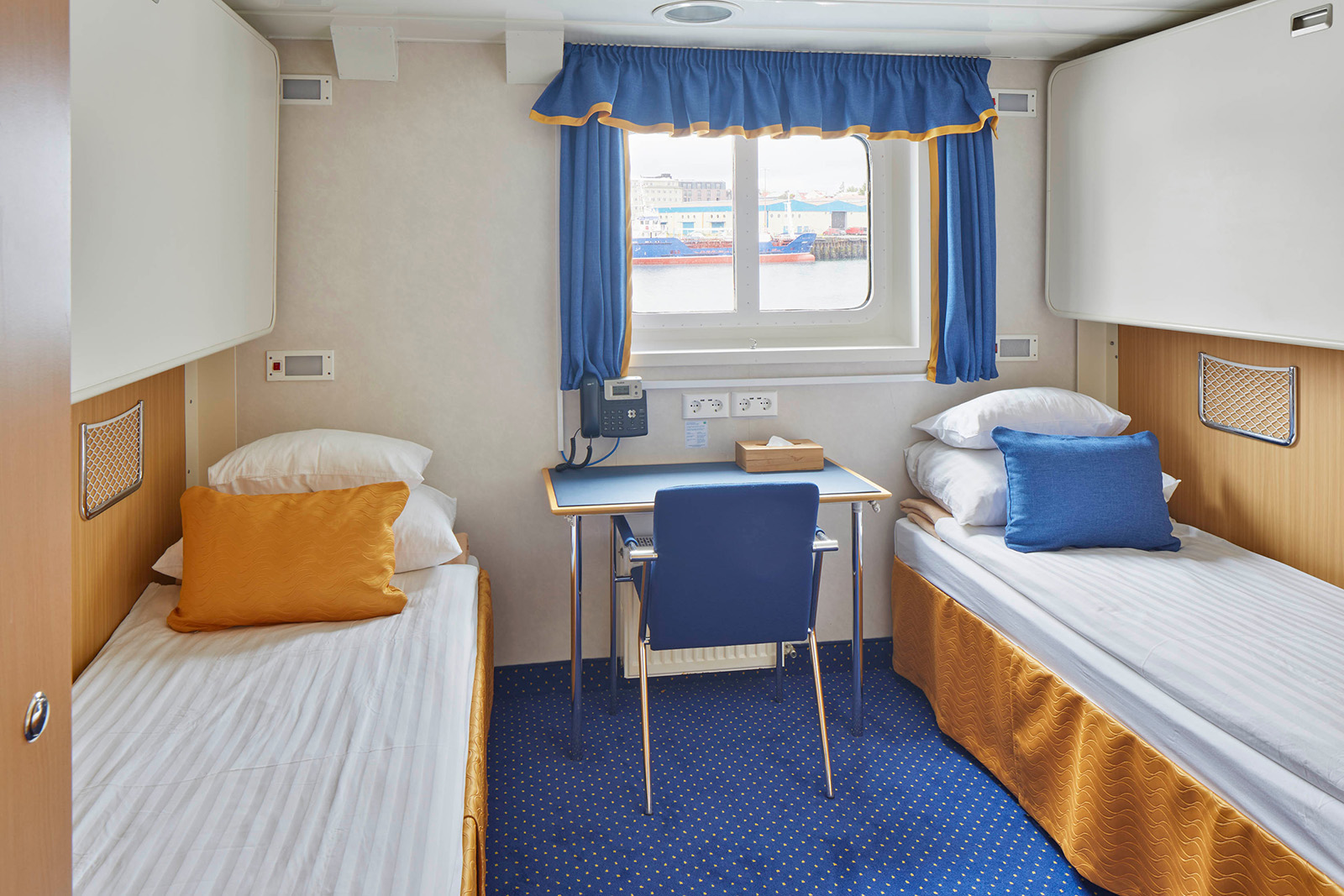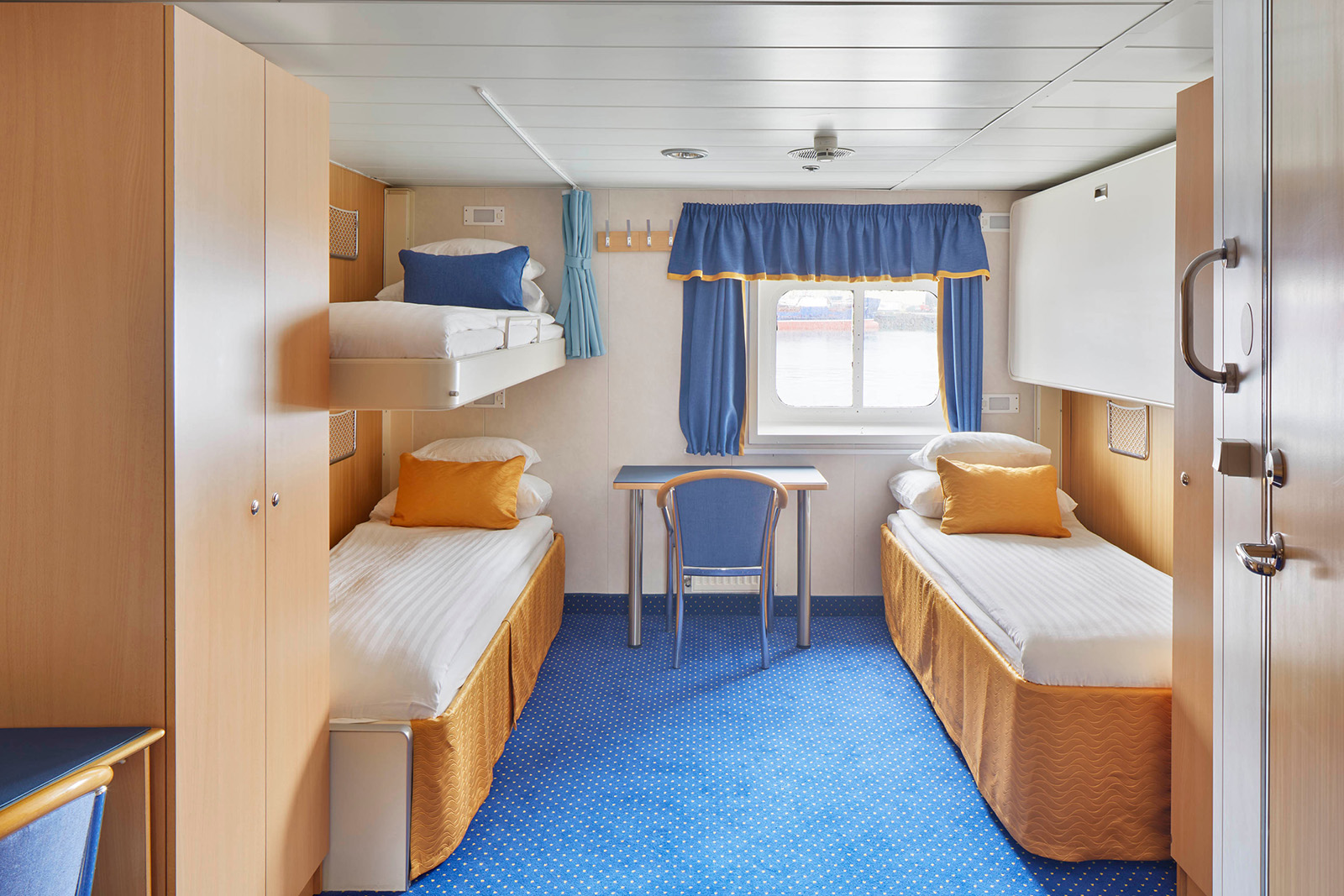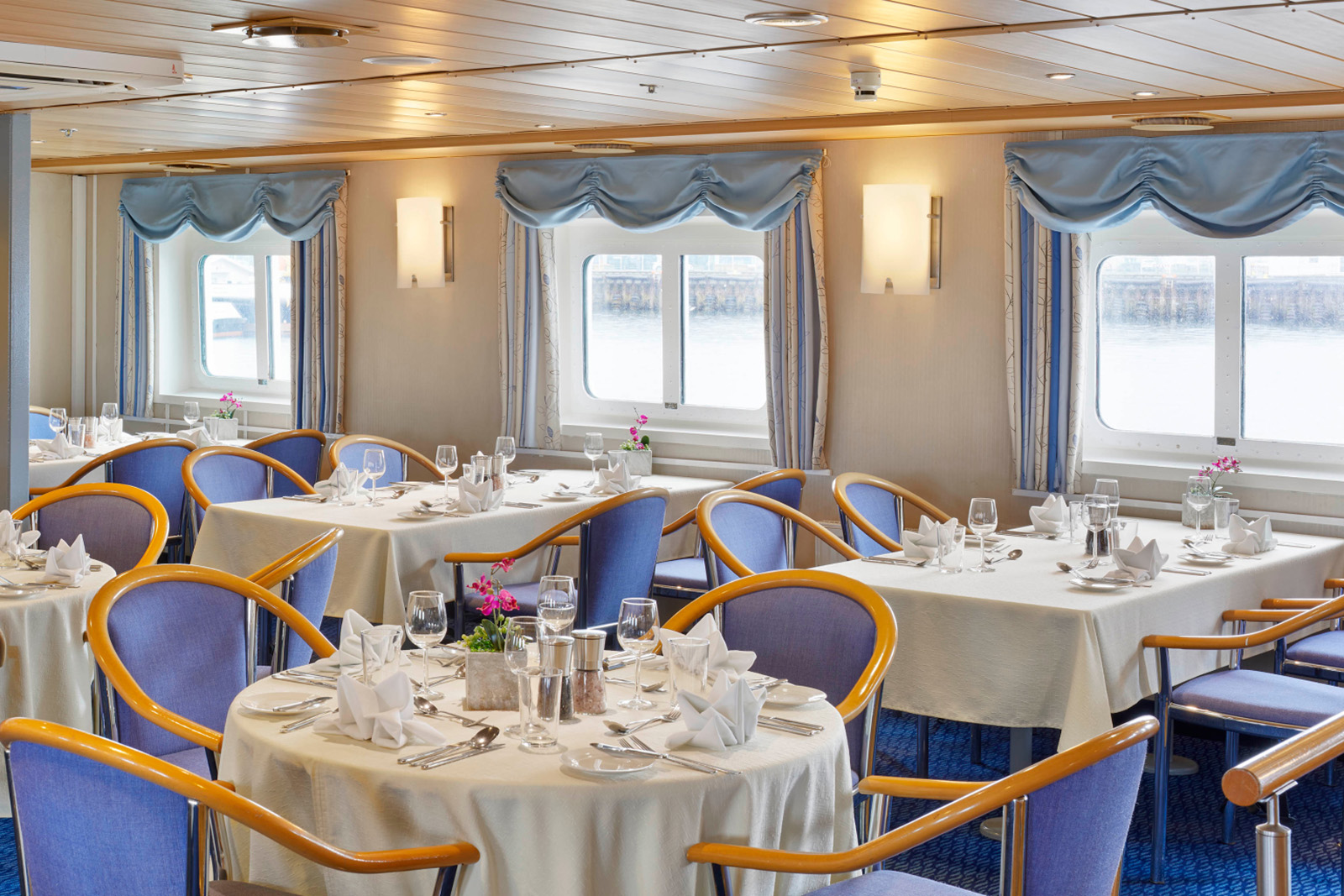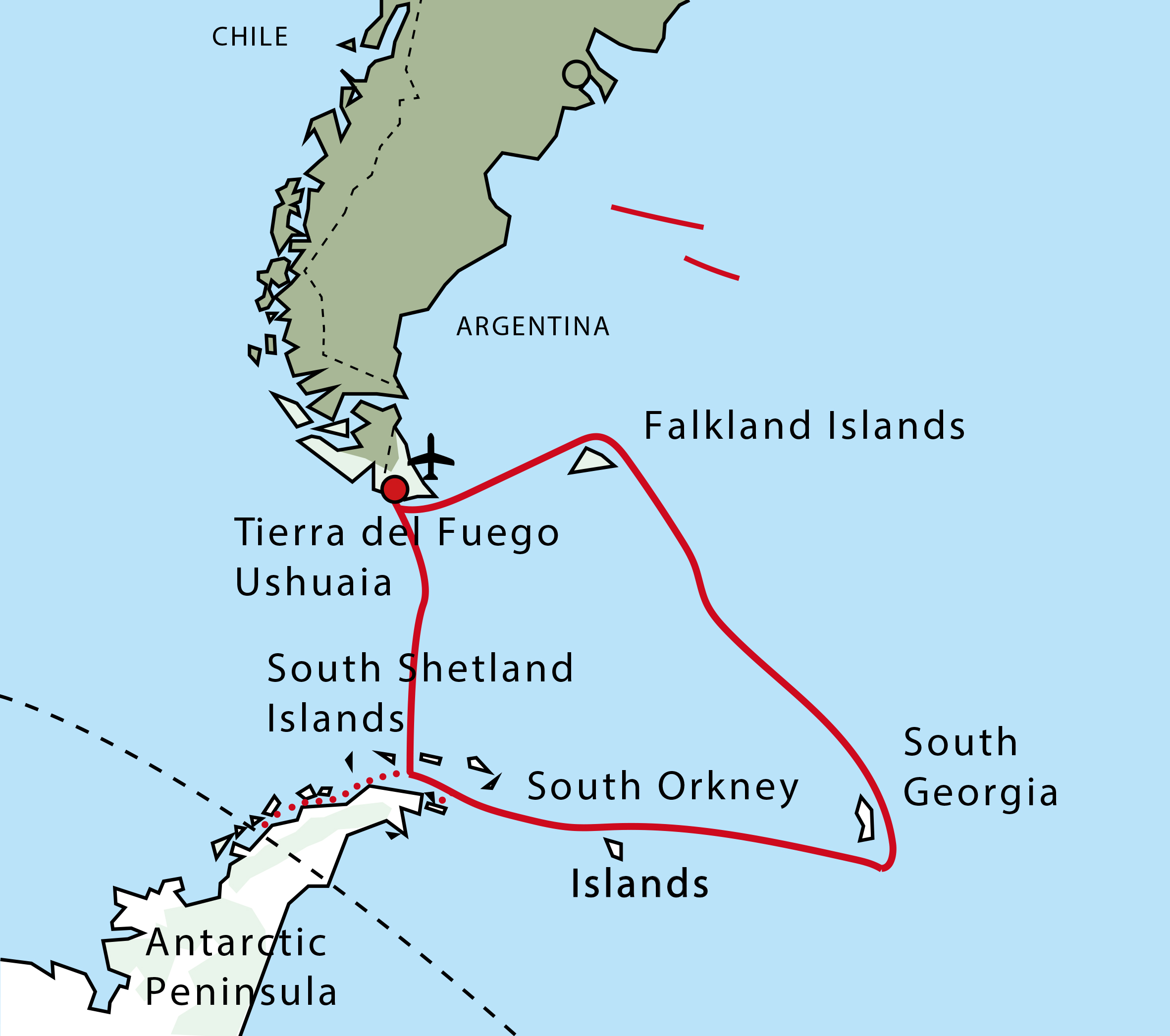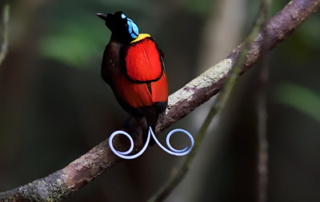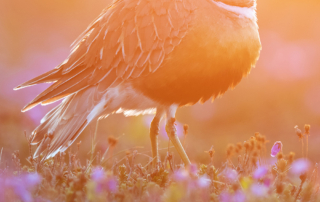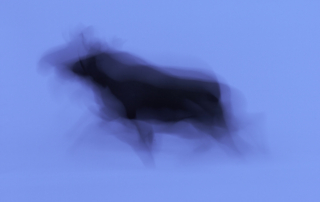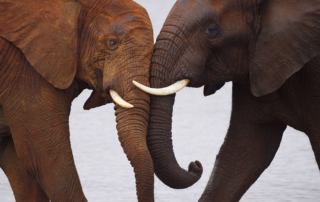SOME HIGHLIGHTS
We have our own special photo group on board, with own leader, own Zodiaks and a total photo focus, 9 participants
Perhaps the best season, it’s spring here, the snow remains in Antarctica and often also in South Georgia, graphically stylish motifs with penguins on snow
Fantastic landscapes with high mountains, huge icebergs, glaciers, pack ice and drift ice
Encounters with 7 or possibly 8 species of penguins, several of them at arm’s length
Elephant seals and cocky fur seals, around the world’s largest king penguin colonies on South Georgia
Albatrosses of several species – both nesting on land, and from the ship at sea, including the wandering albatross, which has the widest wingspan in the world
Weddell seals and leopard seals in Antarctica
Cute baby elephant seals up close
Good chances of exclusive bird species such as Snow petrel, South polar skua, Giant petrel, Cape petrel, Falklands caracara, Snowy sheathbill, Dolphin gull, Ruddy-headed goose, Magellanic oystercatcher, Southern fulmar, 5 species of cormorants, several species diving petrels, prions and storm petrels
Chance to see and photograph humpback whales, minke whales, killer whales, maybe blue whales and several species of dolphins
Our cruise ship m/s Ocean Nova takes a maximum of 78 passengers, which by Antarctic cruise standards is a low number
During the cruise will we pass classic names on the map, such as the Drake passage, the Strait of Magellan, Port Stanley, Grytviken, Elephant Island, Half Moon Island, Paulet Island and Cape Horn
The photographic leader and the expedition leader will show you their best spots and you will get your own photographic advice and tips in a small group of like-minded people
This is nothing but a ”Once in a Lifetime Trip”
THE ULTIMATE ANTARCTIC TRIP?
An unforgettable Antarctic adventure where you have the chance to see as many as seven penguin species! Maybe even an eighth… We travel on the comfortable expedition ship Ocean Nova, which takes only 78 passengers, which is small by Antarctic cruise standards.
On this Antarctic adventure we will have our own photo group on board. Depending on the size of our group, we will have one or two photographic leaders with us, all so that you as a participant will have as many opportunities to develop your photography. We will always do all landings and other activities together in our group. During the trip, our photographic leaders will constantly give you further photographic training based on your prior knowledge and your level. The guidance in the field is completely adapted to you and your needs. In addition to guidance in the field, we will also have theoretical sessions where we talk about different photo techniques that we will use during the trip. During our trip, we will have many different opportunities to take pictures. We will be able to photograph portraits of animals, animals in landscapes, flying birds and magnificent landscapes. Our photographic leader will prepare you in the best way and teach you what to think about in different photo situations.
In addition, our photographic leaders will hold various lectures and workshops. We will look at the participants’ photos and come up with positive photo criticism.
The tour starts in Ushuaia in southern Argentina and we make our way from there to the rugged Falkland Islands, home to charming penguins and unique albatrosses. Then on to incredible South Georgia, which during the breeding season is said to house more wildlife per square meter than any other place on earth. Seeing the giant elephant seals defending their harems and being welcomed by hundreds of thousands of nesting king penguins is a unique and hard to beat experience. We then sail south towards Antarctica. Come with us into this spectacular world on the other side of the earth!
ANTARCTICA
As we sail towards the world’s most remote and isolated continent, Antarctica, we are accompanied by thousands and thousands of seabirds. We keep an eye out for albatrosses, and a range of other seabirds, whales and dolphins. At any moment, the first iceberg can appear on the horizon! Here we explore the dramatic nature with high, snow-covered mountain ranges, mighty icebergs and large penguin colonies. Our exact route in the coming days is extremely dependent on weather and ice conditions. Places we may visit are: Elephant Island, to learn more about Sir Ernest Shackleton’s famous adventures. The site is now home to nesting chinstrap penguins. Just north of the Antarctic Peninsula are the mountainous and animal-rich South Shetland Islands. Adélie, chinstrap and gentoo penguins live here in large numbers, as well as several seal species. Here we hope to disembark on islands such as King George, Half Moon, Barnetos or Livingstone. With a bit of luck, we also reach Deception Island, an active volcano that you can literally sail into. Along the coast of the South Shetland Islands, we keep our eyes open for krill-eating humpback whales. Further south, along the Antarctic Peninsula, the massive pack ice is still thick. Now our ice-enhanced ship and its crew are showing their true capabilities. We move through labyrinths of mighty icebergs and find our way to the most scenic places. Among majestic, snow-capped mountain ranges edged by blue-shifting glaciers, we search for whales and seals and ashore we visit colonies of charming gentoo and adelie penguins. Under favourable weather conditions we hope to set foot on the mainland in Harbor Bay or Paradise Harbour.
SOUTH GEORGIA
In the middle of the Southern Ocean lies the remote island of South Georgia. With its nearly 3000 meter high mountain ranges, impressive glaciers and extensive beaches, the archipelago boasts an impressive landscape as a backdrop for the many photo subjects. Everywhere, on the beaches and rocks, in the water and the air, animal life is crowded. The sound of hundreds of thousands of king penguins is overwhelming. It is an incredible experience to be in the middle of all these large, handsome, pictorial and often very curious birds. In South Georgia, we also meet the giant elephant seals. With a match weight of up to four tons, the males defend their harems, which can consist of over 200 females. The brand new baby elephant seals have started to explore the world and are happy to come and check us out – and their big saucer eyes can make just about anyone melt. Since there are no land-based predators here, the animals are not afraid of humans. This creates stunning scenes and unlimited opportunities to photograph without disturbing them in their daily activities.
FALKLAND ISLANDS
We plan to visit the western parts of the archipelago, which are isolated and windswept but home to many unusual seabirds and migratory birds. Weather permitting, we disembark at Saunders Island, which is one of the few places on earth where four penguin species nest side by side. Here we have the chance to meet gentoo, king, rockhopper and Magellanic penguins, next to nesting black-browed albatrosses. You can sit on the white sand beach and watch penguins come and go while the unique, endemic Falkland caracaras patrol above.
TIERRA DEL FUEGO
We will visit Tierra del Fuego National Park, the world’s southernmost national park. The park’s moors, coasts and southern beech forests are home to guanacos, foxes and beavers, and not least a rich birdlife with species such as the world’s largest bird of prey, the Andean condor, the majestic Magellanic woodpecker, the woodpecker parakeet, steamboat ducks, kelp geese and Magellanic Oystercatcher.
THE SHIP OCEAN NOVA
Ocean Nova was built in Denmark in 1992 and in 2006 she was completely restored inside. Today she makes a career as a small and comfortable expedition ship. Ocean Nova takes up to 78 passengers in Antarctica. On board there are comfortable double and triple cabins, all with sea view and private shower and WC. All cabins have desks with chairs and plenty of space to store clothes and other equipment. In the ship’s dining room, delicious meals are served between disembarkations and in the panoramic lounge you have a wonderful view of the surrounding polar landscape. Here you can listen to interesting lectures about the area’s biology and polar history. Passengers are welcome to visit the pier 24 hours a day and there is always something to see or spy from the spacious observation decks. On Ocean Nova there is an international crew that speaks English and there is a relaxed and homely atmosphere on board. Traveling on this small expedition ship is an experience that differs markedly from a trip on a larger and more conventional cruise ship.
THE EXPEDITION
The itinerary is updated during the journey. We always strive to maximize your polar experience – flexibility is the key to a successful expedition! We adapt to weather, wind, current ice conditions and wildlife reports. Nature and wildlife are at the center of this trip. The crew, the captain and us who are the guides on the trip have extensive experience of both Antarctica and photography under the special conditions that prevail. The crew is English-speaking and the participants can be from several countries. The ship is perfect for photography. The chefs on board usually offer exciting and very good food. No one has to go hungry.
Itinerary
Day 1 (9/11) (Dinner)
We arrive in Ushuaia during the day. This is where our arctic adventure starts. Ushuaia is beautifully surrounded by snow-capped mountain peaks and we stay one night in a centrally located hotel.
Day 2 (10/11) Tierra del Fuego, Argentina (Breakfast – Lunch – Dinner)
During the morning we make a short visit to the world’s southernmost national park, Tierra del Fuego. The park is home to guanacos, foxes and beavers but also offers a rich bird life with species such as Magellanic woodpeckers, Magellanic parakeets and condors. During the afternoon we board Ocean Nova and sail out through the Beagle Channel – our great Antarctic expedition has begun! If we’re lucky, we’ll see penguins even now – look out for swimming Magellanic penguins in the Beagle Channel!
Day 3 (11/11) At sea (Breakfast – Lunch – Dinner)
We spend the day at sea in the company of seabirds such as petrels and the impressive albatross that gracefully and playfully follows our ship. We look for whales and dolphins and our polar specialists give their interesting lectures about the wildlife and history of the Falkland Islands.
Day 4 (12/11) West Falkland Islands (Breakfast – Lunch – Dinner)
We plan to visit the western parts of the archipelago, which are isolated and windswept but home to many seabirds and migratory birds, such as the black-browed albatross. Weather permitting, we hope to go ashore and explore Saunders Island which is one of the few places on earth where four penguin species nest side by side. Here we have the chance to meet gentoo, king, rockhopper and Magellanic penguins next to nesting black-breasted albatrosses. You can sit on the white sand beach and watch penguins come and go while caracaras patrol above.
Day 5 (13/11) Stanley, eastern Falkland Islands (Breakfast – Lunch – Dinner)
We stop in the Falkland Islands’ charming little capital, Stanley, whose quiet harbor was once an important stop for all the ships trying to round Cape Horn. We also visit the museum which has an impressive collection of historical stamps.
Day 6-7 (14-15/11) Southern Ocean (Breakfast – Lunch – Dinner)
As we steer southeast towards Antarctic waters, we listen to interesting lectures about South Georgia’s fascinating history and rich wildlife. The tension rises further as we pass the Antarctic Convergence and feel a noticeable drop in temperature. The wildlife will show us the way to the island – look out for whales, seals and penguins swimming in the sea.
Day 8-11 (16-19/11) South Georgia (Breakfast – Lunch – Dinner)
This paradise island offers huge mountain ranges, huge glaciers and lots of king penguins. We arrive at the beginning of summer when the island is still beautifully embedded in a thin layer of snow. For anyone who enjoys wildlife, South Georgia is a real oasis. A loud chorus of hundreds of thousands of penguins can meet us in places like St Andrews Bay or Salisbury Plain. Colossal elephant seals wallow on the sandy beaches and at this time we have the opportunity to see the impressive fights between the ruling harem king and challenging males. South Georgia is also home to fur seals and several penguin species such as macaroni, magellanic and gentoo penguins.
It was on South Georgia that the British polar explorer Shackleton landed after a hair-raising voyage. We visit the grave of this polar hero in Grytviken, an old whaling station with a fine museum.
Day 12-14 (20-22/11) At sea(Breakfast – Lunch – Dinner)
As we sail towards the world’s most remote continent, Antarctica, we are accompanied by a multitude of seabirds. Our polar experts tell exciting stories about those who first set off on heroic expeditions to explore Antarctica. We’re on the lookout for the first iceberg that could appear on the horizon at any moment!
Day 15-18 (23-26/11) South Shetland islands and the Antarctic Peninsula (Breakfast – Lunch – Dinner)
Our exact route in the coming days is extremely dependent on weather and ice conditions. Below are only examples of places we may visit.
We hope to land on Elephant Island to learn more about Sir Ernest Shackleton’s famous adventure. It was here that Shackleton and his men, in hair-raising circumstances, managed to get after their ship was wrecked in the Weddell Sea pack ice in 1916. On Elephant Island, they set up a camp they called Point Wild, after Shackleton’s commander Frank Wild. The site is now home to nesting chinstrap penguins.
Just north of the Antarctic Peninsula are the mountainous and animal-rich South Shetland Islands. Adélie, chinstrap and gentoo penguins live here in large numbers, as well as several seal species. Here we hope to disembark on islands such as King George, Half Moon, Barnetos or Livingstone. With a bit of luck, we’ll also reach Deception Island, an active volcano that you can literally sail into. Along the coast of the South Shetland Islands, we keep our eyes peeled for humpback whales.
Further south, along the Antarctic Peninsula, the massive pack ice is still thick. Now our ice-enhanced ship and its crew are showing their true capabilities. We move through labyrinths of mighty icebergs and find our way to the most scenic places. Among majestic, snow-capped mountain ranges edged by blue-shifting glaciers, we search for whales and seals and ashore we visit colonies of charming gentoo and adelie penguins. Under favorable weather conditions we hope to set foot on the mainland in Harbor Bay or Paradise Harbour.
Day 19-20 (27-28/11) Drake passage (Breakfast – Lunch – Dinner)
During the journey over the Drake passage, we reflect on the magical experiences we have shared. As we approach South America, we have a chance to see whales, dolphins and seals. On the last evening, we gather for a farewell dinner and celebrate the completion of the expedition.
Day 21 (29/11) Ushuaia, Argentina (Breakfast – Lunch – Dinner)
Early in the morning we disembark the ship in Ushuaia and explore this quaint little community on our own.
NOTE! Our exact route depends entirely on weather, wildlife and ice conditions. The itinerary will be updated during the journey. We always strive to maximize your polar experience – flexibility is the key to a successful expedition!
Photographic leader
Staffan Widstrand, born in 1959 is a photographer and writer. Sony Imaging Ambassador.
Staffan is one of Sweden’s internationally most recognized photographers. In 2011, Outdoor Photography Magazine called him ”one of the most influential photographers in the world”. Appointed ”Wildlife photographer of the year” in Sweden and a winner of international photo competitions, such as:
Wildlife Photographer of the Year
European Nature Photographer of the Year
Emirates Wildlife Photographer of the Year
Årets Bild i Sverige
PGB Awards
Staffan has been on the jury of several international photo competitions and was one of the main jury members in World Press Photo 2013.
Published in most of the major magazines in the world, such as National Geographic Magazine, GEO, Stern, Der Spiegel, Le Figaro, La Repubblica, El Mundo, El País, Natur, Terre Sauvage, Animan, Veja Brazil, The Guardian, The Sunday Times, FOCUS, Yomiuri Shimbun och Shanghaibaserade The Bund Pictorial.
Staffan has had international solo or group exhibitions in Toronto, at the Swedish Embassy in Tokyo, at Tromsø Museum, at Bodø Museum, at the Kunst-und Ausstellungshalle in Bonn, Oslo City Hall, Finlandia Hall in Helsinki, the Swedish Embassy in Washington, in Mérida, Mexico, in Mexico City, in Salamanca, Spain, at the National Zoological Museum in Beijing, in Chengdu, Tianjin, Shanghai and Shenzhen, China, at the National Museum of Wildlife Art in Jackson Hole, the museum of Torino, Italy as well as major outdoor exhibitions in The Hague, Prague, Berlin, Madrid, Copenhagen and Stockholm. In Sweden, he has had exhibits at Kulturhuset in Stockholm, the regional museums in Kristianstad, Luleå and Malmö, at Fotomässan in Gothenburg and in Stockholm, as well as at the Skansen, Kolmården and Borås Zoos, at Hornborgasjöns Konsthall and at Bränneriet Art in Österlen.
Staffan has published 18 books, four of which have been winners of the WWF Panda book award.
A picture editor at Natur & Kultur publishers in Stockholm for 5 years, a nature tour guide and tour production manager all across the world for many years. Appointed as Visiting Professor at the Beijing Ministry of Culture Old University, and he is also one of the founders of a possible ”Wild Wonders of China” initiative.
Staffan is a member of the Swedish Nature Photographers Association (Naturfotograferna/N)
Website: www.staffanwidstrand.se
www.wild-wonders.com
www.rewildingeurope.com
www.wildwondersofchina.com




